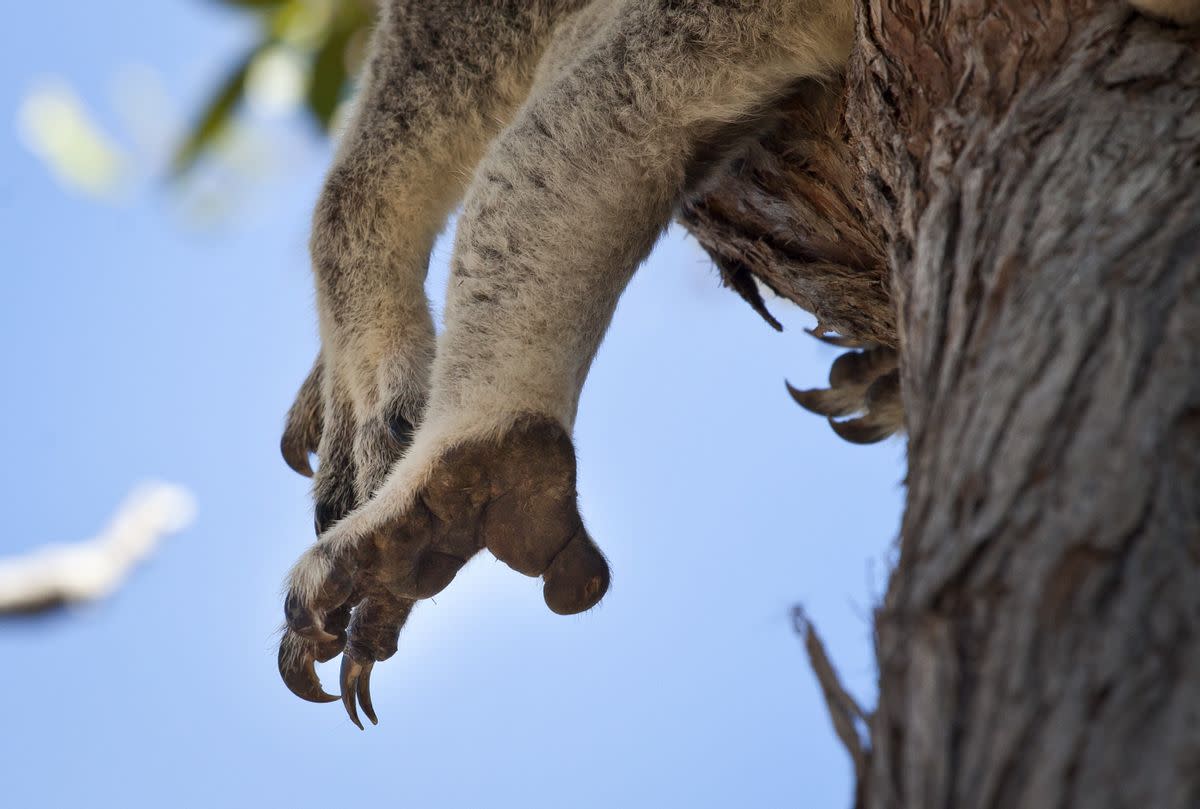Fact Check: Rumors Say Koala Fingerprints Have Confused Crime-Scene Investigators in Australia. Here's What We Found

Claim:
There have been documented cases of koala fingerprints confusing crime-scene investigators because they're similar to human fingerprints.
Rating:
Over the years, posts circulating on platforms including Instagram and iFunny have claimed that koala fingerprints found at crime scenes in Australia have confused investigators because of their similarity to those of humans.
For example, in April 2024, a post from the X account @Fact said, "Koala fingerprints are almost indistinguishable from a human's and on occasion have been confused at a crime scene."
That same claim was made on Facebook in 2022 by the account for TV network Animal Planet:
Although it's true that koalas have fingerprints similar to humans', the claim that crime-scene investigators have confused the two is unfounded — we have found no evidence to support it.
These adorable marsupials native to Australia have long been a subject of fascination, not just for their cuddly appearance but also for their unique physiological traits.
Research conducted in the mid-'90s by scientists at the University of Adelaide revealed that koalas have unique fingerprints that are remarkably similar to those of humans. These fingerprints serve various functions, including aiding in grasping leaves to eat as they climb trees, and facilitating sensory perception.
In the study, researchers examined the ridges and whorls of koala fingerprints using a scanning electron microscope and found that their fingerprints rival humans' in terms of their complexity and individuality.
This similarity led to the notion that crime-scene investigators might mistake koala fingerprints for those of a human, if koala prints happened to be present at the scene of a crime.
Maciej Henneberg, professor of anthropological and comparative anatomy at the University of Adelaide, explained to The Independent in 1996, "Although it is extremely unlikely that koala prints would be found at the scene of a crime, police should at least be aware of the possibility."
To learn more, Snopes spoke to Gemma Steingold, former wildlife nurse and zookeeper at Taronga Conservation Society Australia, who has two decades of experience caring for native wildlife.
"I've worked with sick and injured koalas, both captive and wild," Steingold told Snopes. "I have also quarantined healthy koalas arriving and departing the zoo."
Explaining why koalas have hands and feet instead of paws, Steingold said, "The difference between hands and paws is having an opposable thumb. Given that both digit one and two are opposable, this tells us that koalas have hands."
Koala hands adapted for an arboreal lifestyle spent predominantly in eucalyptus trees. These specialized limbs, equipped with five digits and sharp claws, facilitate gripping branches and navigating their habitat with agility. The presence of opposable thumbs allows koalas to manipulate eucalyptus leaves for feeding, while their hind limbs, lacking functional thumbs, serve primarily for propulsion during climbing.
"Great apes also have somewhat similar fingerprints to humans. Koalas and humans, however, share the most similar prints," Steingold said, adding that although it's possible the fingerprints of humans and koalas may have briefly been mistaken in some forensic settings, she's "not aware of them being mistaken" at crime scenes, due to key differences between size and shape.
In 2018, as part of her Paris Review article on "The Surprising History (and Future) of Fingerprints," journalist Chantel Tattoli investigated the claim of koala crime-scene confusion. Per New South Wales police Senior Sgt. Peter Hennessy:
"Although it would make for a good story, unfortunately I have never heard of Australian Crime Scene Examiners mistaking a koala's fingerprints with those from a human."
Even if we allow that koalas' humanlike fingerprints theoretically pose challenges for forensic investigators, particularly in regions of Australia where koalas are abundant, forensic technology continues to evolve, allowing scientists to better differentiate between human and koala fingerprints.
Snopes has previously investigated other quirky claims involving animals, including the viral video of a man punching a kangaroo to save a dog and a purported photograph of a hedgehog skeleton.
Sources:
Burrell, Ian. "Koalas Make a Monkey out of the Police | The Independent." The Independent, 7 Dec. 1996. www.independent.co.uk, https://www.independent.co.uk/news/koalas-make-a-monkey-out-of-the-police-1313275.html.
Facebook. https://www.facebook.com/AnimalPlanet/posts/koalas-and-human-fingerprints-are-so-similar-that-they-have-been-confused-at-cri/10159246207093375/. Accessed 6 May 2024.
Henneberg, M., et al. "Fingerprint Homoplasy: Koalas and Humans." Http://Naturalscience.Com/Ns/Articles/01-04/Ns_hll.Html, 1997. digital.library.adelaide.edu.au, https://digital.library.adelaide.edu.au/dspace/handle/2440/5433.
"Koala, Facts and Photos." Animals, 11 Apr. 2010, https://www.nationalgeographic.com/animals/mammals/facts/koala.
Koalas Have Fingerprints Almost Identical to Ours. 21 Sept. 2022, https://www.pbs.org/wgbh/nova/article/koala-fingerprints/.
"Koalas Have Fingerprints Just like Humans." Office for Science and Society, https://www.mcgill.ca/oss/article/did-you-know/koalas-have-fingerprints-just-humans. Accessed 6 May 2024.
"Physical Characteristics of the Koala." Australian Koala Foundation, https://www.savethekoala.com/about-koalas/physical-characteristics-koala/. Accessed 6 May 2024.
reverendpooponyous. "Koala Fingerprints Are so Similar to Humans That Even Crime Scene Investigators Have Been Confused by Them. KOALA HUMAN Nick Morrow @NRMorrow Wait What Kind of Crime Scene Has Both." iFunny, https://ifunny.co/picture/bTffJ2o2A. Accessed 6 May 2024.
Sweeten-Shults, Lana. "Senior Forensic Science Projects Investigated." GCU News, 2 Nov. 2022, https://news.gcu.edu/gcu-news/senior-forensic-science-projects-investigated/.
"Taronga Conservation Society Australia." Taronga Conservation Society Australia, http://taronga.org.au/. Accessed 6 May 2024.
Tattoli, Chantel. "The Surprising History (and Future) of Fingerprints." The Paris Review, 15 May 2018, https://www.theparisreview.org/blog/2018/05/15/the-surprising-history-and-future-of-fingerprints/.
"You May Be Sweet and Furry, but You're Nicked." New Scientist, https://www.newscientist.com/article/mg15220591-500-you-may-be-sweet-and-furry-but-youre-nicked/. Accessed 6 May 2024.

 Yahoo News
Yahoo News 

